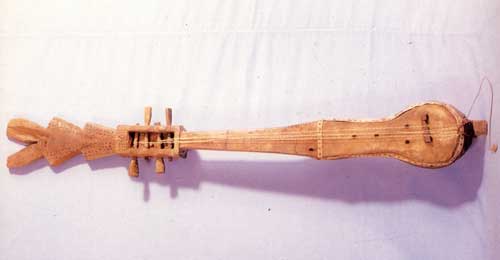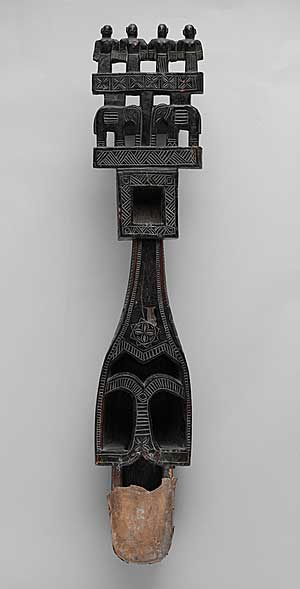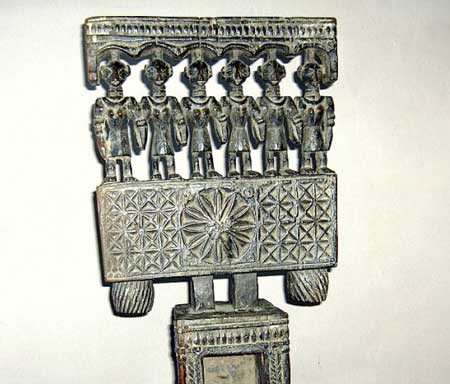
The banam is a class of folk fiddles found among the Santal people of North East India and Bangladesh.
Classification of the various forms of banam are difficult. Among the Santalis, Tendor Banam, Dhodro Banam, Huka Banam and a host of other names may be applied to them. However the Santalis tend to, classify their instruments according to ornamentation rather than structural elements. Furthermore there is extreme variety because each instrument reflects the artistic vision of its maker.

The banam is very import to the Santal people. According to legend, at one time there were seven brothers who conspired to kill and eat their sister. But the youngest brother was so overcome by guilt that he could not bring himself to eat his portion. He surreptitiously buried it in an ant hill. Upon that spot, a beautiful tree grew. A stranger passing the tree, hears a beautiful sound emanating from it. He cuts a branch off the tree and fashions the first banam.

The importance of the banam to the Santals is well represented by the artwork on the instruments. In many cases the major portion of the work goes into these elaborate carvings. Human figures are an especially important motif. It is interesting to note that some of the most elaborately carved banams may be the crudest from a purely musical standpoint.


The number of strings varies. A single string is the most common, but two, three, and even four strings are to be found.
One curious aspect of the banam is the very crude approach to tuning. Many times they may not be fitted with a tuning peg. Tuning may be affected by sliding the bridge up or down. Therefore it is common to see a separate bridge for each string. Sometimes the string is tied against the neck in a way that the length of the string can be changed.
Similar instruments with similar names are seen throughout the region. Pena, bena, and bana appear to be cognates of the term banam.
| This book is available around the world |
|---|
Check your local Amazon. More Info.
|
Selected Video
Other Sites of Interest
India : North Indian folk music
Bharatiya Sangeet Vadya (Review)
Catalogue of Indian Musical Instruments
Fractal dimension analysis of audio signals for Indian musical instrument recognition
Natural synthesis of North Indian musical instruments
Recognition of Indian Musical Instruments with Multi-Classifier Fusion
The Tagore collection of Indian musical instruments
Improvement of Audio Feature Extraction Techniques in Traditional Indian Musical Instrument
East Indians musical instruments
